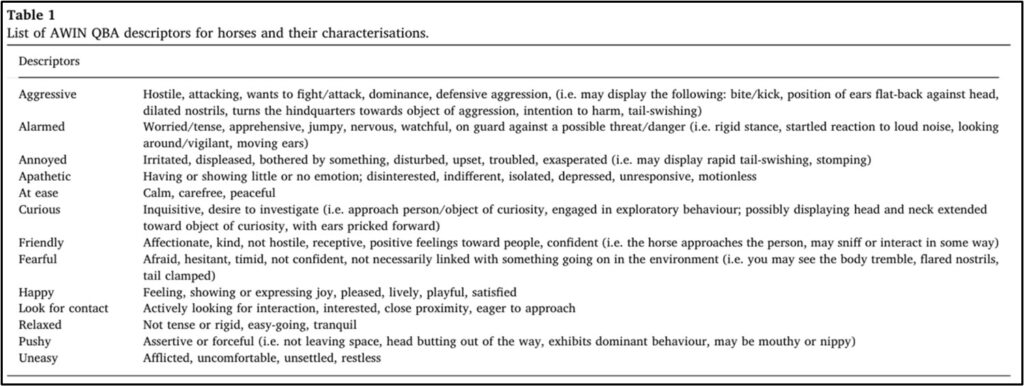Affective State
What is affective state?
Affective state = mood
Affective state is the correct term for the ‘mood’ of the horse. We call it the affective state rather than mood as we know horses don’t experience emotions in the same way as us and we don’t want to anthropomorphise (treating non-human species as humans) as this can lead to misunderstanding and conflict between horses and humans. Horses are not capable of manipulating, winning or losing a battle, taking revenge, being naughty or thinking through complex human emotions; they simply respond to their environment and their previous experiences. Most ‘naughty’ behaviours are as a result of fear responses or previous incorrect training (intentional or unintentional!).
A huge part of the joy and power of interacting with horses is that there is never a hidden agenda or bad feeling and they react to humans purely on the basis of how the human interacts with them and their previous experiences. An incredibly powerful interactive experience for everybody.
How is understanding a horses affective state useful to us?
We use a system which enables us to predict their likely behavioural pattern based on our observations of them and this can make our interactions safer and more enjoyable with a greater level of understanding.
Many of us would say we can instinctively know what affective state (mood) a horse might be in but if asked to describe exactly why we thought a horse was relaxed or alarmed we might struggle to describe what we are picking up on. Equally if you are less experienced with horses it can be very difficult to learn how to ‘read’ horses without many years of experience and trial and error. It can be very helpful for all of us to increase our skills in working out what affective state a horse might be in to better predict how a horse might behave in a situation or interaction with us as handlers.
The affective state of an animal influences how they respond to new things in their environment, to other horses and to us as handlers. We instinctively take it into account when we interact with horses, for example:
- ‘He’s on his toes today so I won’t walk him past the flapping haylage wrap’
- ‘She’s calm today so she can go into the beginners lesson’
- ‘She seems pushy today in the stable so I’ll use her in the volunteers lesson rather than the Tea with a Pony Session’
We can use descriptions of horse behaviour to learn more about what subtle signs a horse might give us for each affective state. The table below shows the currently accepted affective states of equines and what you may observe for each one.

Minero M, Dalla Costa E, Dai F, Canali E, Barbeieri S, Zanella A, Pascuzzo R, Wemelsfelder F (2018) Using quantitative behaviour assessment (QBA) to explore the emotional state of horses and its association with human-animal relationship Applied Animal Behaviour Science 204: 53-59